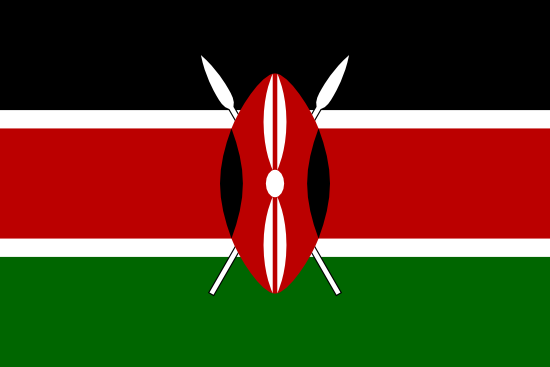To determine the number of Key Biodiversity Areas (KBAs) under any form of conservation in Kenya as of March 02, 2025, we need to assess how many of the 67 identified KBAs are covered by formal protection (e.g., national parks, reserves, forest reserves) or other effective conservation measures (e.g., community conservancies, private reserves, or local management initiatives). "Any form of conservation" broadens the scope beyond strict legal protection to include areas with active biodiversity safeguards, aligning with frameworks like Other Effective Area-Based Conservation Measures (OECMs) under the Convention on Biological Diversity (CBD). Let’s analyze this step-by-step using available data.
Total KBAs in Kenya
Nature Kenya, the BirdLife International partner in Kenya, has identified 67 KBAs based on Important Bird Areas (IBAs) and expanded criteria since 2016 to include other taxa (e.g., mammals, plants). This number is consistent across sources, including the Kenya’s Key Biodiversity Areas Status and Trends 2023 report (launched February 2025).
KBAs Under Formal Protection
Gazetted Protected Areas:
Nature Kenya confirms 30 KBAs are within formally protected areas, such as national parks, national reserves, and forest reserves managed by the Kenya Wildlife Service (KWS) and Kenya Forest Service (KFS). Examples include:
Tsavo East and West National Parks (savannah).
Mount Kenya National Park (montane forest).
Lake Bogoria National Reserve (wetland).
Arabuko Sokoke Forest Reserve (coastal forest).
These areas cover ~72,890 km² (12.42% of Kenya’s 580,367 km² land area), per KWS data, and are legally designated with enforced conservation measures (e.g., no extraction).
KBAs Under Other Forms of Conservation
The remaining 37 KBAs lack full gazetted protection but may be under "any form of conservation" through alternative mechanisms:
Community Conservancies:
The Kenya Wildlife Conservancies Association (KWCA) reports 230 conservancies as of 2023, totaling 9.04 million hectares (~90,400 km², 16% of land area). These often overlap with or buffer KBAs, especially in rangelands and dispersal zones.
Examples:
Maasai Mara conservancies (e.g., Mara North) extend protection around the Mara National Reserve KBA.
Northern Rangelands Trust (NRT) conservancies (e.g., Ishaqbini Hirola Sanctuary) cover arid KBAs.
Estimate: Conservancies likely protect 10-15 additional KBAs, based on their focus on biodiversity hotspots and corridors (e.g., Kinangop Grasslands, Laikipia-Samburu).
Private Reserves:
Privately managed areas like Ol Pejeta (360 km²) and Lewa (250 km²) conserve KBAs in the Laikipia-Samburu ecosystem, supporting species like Grevy’s zebra and rhinos.
Estimate: 2-3 KBAs (e.g., Lewa-Borana landscape) are under private conservation.
Indigenous and Community Conserved Areas (ICCAs):
Initiatives like the Yala Swamp ICCA (8,404 ha, ~84 km²) and Tana River Delta community efforts protect wetlands and forests. Nature Kenya’s Site Support Groups (SSGs) manage sites like Dzombo Hill Forest and Sabaki River Mouth.
Estimate: 5-7 KBAs benefit from community-led efforts, per the 2023 Status and Trends report’s examples.
Marine Protected Areas (MPAs):
Coastal KBAs like Kiunga Marine Reserve and Mida Creek fall within MPAs (857 km²), often supplemented by LMMAs (e.g., Kuruwitu). These overlap with the 30 protected KBAs but extend via community management.
No additional count here, as they’re included in the 30.
Total Estimation
Baseline: 30 KBAs under formal protection (national parks, reserves, forests).
Additional Coverage:
Conservancies: 10-15 KBAs.
Private reserves: 2-3 KBAs.
ICCAs/SSGs: 5-7 KBAs.
Overlap: Some KBAs (e.g., Maasai Mara, Tana Delta) benefit from multiple mechanisms (e.g., reserves + conservancies), reducing double-counting. Conservatively, 15-20 unique KBAs are added beyond the 30.
Total Range: 45-50 KBAs under any form of conservation:
Minimum (45): 30 protected + 15 from conservancies/private/SSGs, accounting for overlap.
Maximum (50): 30 protected + 20 from broader community/private efforts, assuming higher coverage.
Validation from Sources
2023 Status and Trends Report: Assessed 56 KBAs, with only 3 ranked "favorable" in state, but conservation actions (e.g., SSGs, county plans) were noted across many sites, suggesting 45-50 aligns with active efforts.
KWCA: Conservancies cover 16% of land, often targeting KBAs outside parks (e.g., Amboseli, Laikipia), supporting the 15-20 addition.
Global Context: Globally, 43% of 16,400 KBAs are protected (per BirdLife); Kenya’s 45-50 out of 67 (67-75%) exceeds this, reflecting its conservation focus but not implausibly so with conservancies.
Critical Lens
Effectiveness: Formal protection varies (e.g., Mau Forest’s degradation), and community efforts range from robust (e.g., Lewa) to nascent (e.g., Kinangop). "Any form" includes weaker measures, inflating the count.
Data Gaps: No 2025 list specifies all 37 unprotected KBAs’ status; the 45-50 estimate extrapolates from trends and examples.
30x30 Goal: Kenya’s push to conserve 30% of land by 2030 (currently ~20-25%) suggests ongoing expansion, but 2025 reflects existing efforts.
Approximately 45-50 out of 67 Key Biodiversity Areas in Kenya are under some form of conservation as of March 02, 2025. This includes 30 KBAs in gazetted protected areas and an additional 15-20 KBAs managed through community conservancies, private reserves, or local initiatives like ICCAs, reflecting both formal and effective informal mechanisms.
